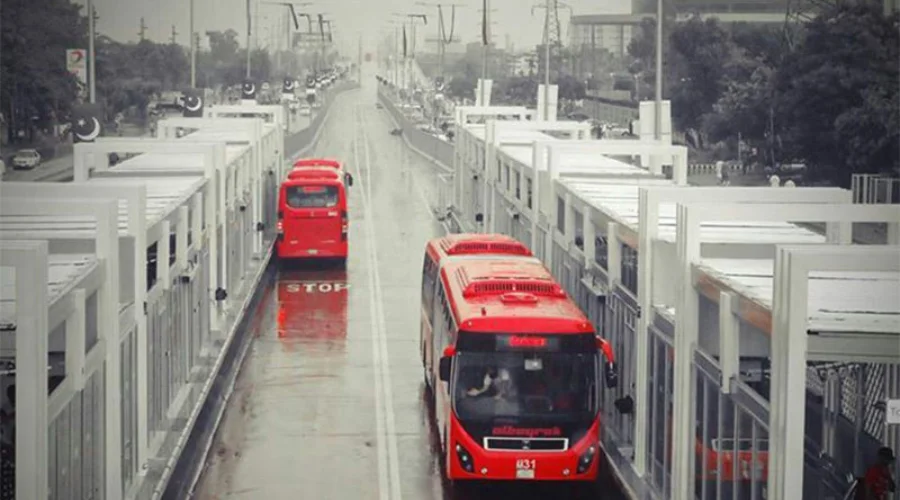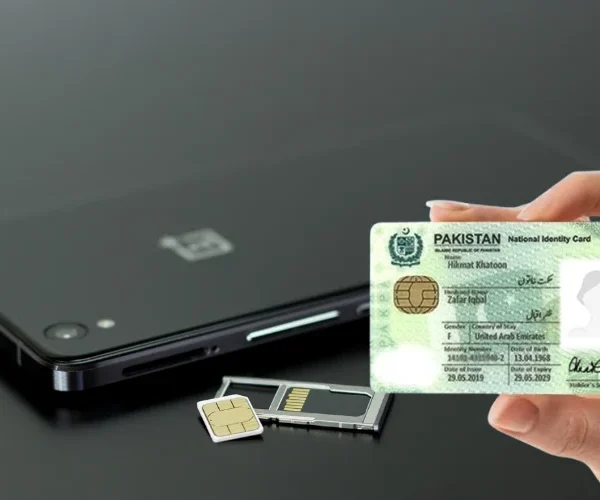The Lahore Metro Bus System is one of the most significant public transport projects in Pakistan. Introduced in 2013, it has transformed daily commuting for thousands of people in the provincial capital of Punjab. Known locally as Metro Bus Lahore, this system provides an affordable and efficient mode of travel that saves time and reduces the stress of city traffic.
The service operates on a dedicated bus rapid transit corridor and connects major points of the city from Shahdara to Gajjumata. With its modern stations and organized routes, the Lahore Metro Bus has become an important part of the city’s urban mobility plan. For many commuters, it represents a reliable and comfortable alternative to traditional buses, wagons, and rickshaws.
This initiative also highlights the importance of investing in sustainable transport systems in developing countries. By offering affordable fares and quick travel time, it sets an example for other cities in Pakistan to follow.
History and Development
The Metro Bus project in Lahore was inaugurated on February 10, 2013, by the then Chief Minister of Punjab, Shahbaz Sharif. Built in a record time of eleven months at a cost of around Rs. 30 billion, it became Pakistan’s first major bus rapid transit service. Its aim was to provide the people of Lahore with a modern, efficient, and reliable form of transport that could replace the discomfort of overcrowded traditional buses.
The launch of the Metro Bus was more than just an infrastructure project; it created employment opportunities for drivers, conductors, security staff, and maintenance workers. It also marked the beginning of a new era in Pakistan’s urban development, inspiring other cities such as Multan, Rawalpindi, Islamabad, Peshawar, and Karachi to develop similar BRT systems.
Since its start, the project has continued to improve with new buses, better facilities, and ongoing expansion plans. This constant progress shows the government’s commitment to building a sustainable and modern transport system for its citizens.
Operating Authority and Management
The Lahore Metro Bus is managed and supervised by the Punjab Metrobus Authority, a provincial body responsible for overseeing the service. This authority ensures that the buses, stations, and routes operate smoothly and that passengers are provided with reliable facilities.
The system’s operation has been supported by experienced partners like Veda, who took charge of running the fleet in 2017. Under this management, new eco-friendly buses were introduced, including a fleet of diesel-electric hybrids aimed at reducing pollution and improving fuel efficiency.
The Government of Punjab continues to monitor and regulate the service through the Punjab Mass Transit Authority. Their goal is to maintain affordable fares while also keeping the system safe, clean, and accessible for all passengers, including women, children, the elderly, and people with disabilities. This structured management has made Metro Bus Lahore one of the most trusted transport options in the city.
Route and Coverage
The Lahore Metro Bus operates on a 27-kilometre dedicated corridor that stretches from Shahdara Terminal in the north to Gajjumata in the south. This route passes through some of the busiest areas of Lahore and provides a direct connection between residential, commercial, and administrative zones.
The corridor includes elevated tracks as well as ground-level sections to ensure uninterrupted travel. Key points such as Civil Secretariat, MAO College, Kalma Chowk, and Model Town are part of this route, making it highly useful for office workers, students, and general commuters.
The route is also linked with the Orange Line Metro Train, giving passengers easy access to another major transport system in Lahore. With its planned design, the Metro Bus route helps reduce travel time and provides a reliable alternative to private cars and local wagons.
Also Read This: 8171 Web Portal: BISP Check Online and Registration
Stations
The Lahore Metro Bus system has a total of 27 stations, stretching from Shahdara in the north to Gajjumata in the south. Out of these, 18 stations are located at ground level, while 9 are elevated for smoother flow of traffic and safety.
Each station is designed with modern infrastructure including escalators, sliding platform doors, wide waiting areas, digital screens for real-time updates, and hygienic washrooms. Ticket vending machines make fare payment easy, while wheelchair access ensures that elderly and disabled passengers can also use the service comfortably.
Here is the complete list of Lahore Metro Bus stations:
- Shahdara Terminal
- Niazi Chowk
- Timber Market
- Azadi Chowk
- Bhatti Chowk
- Katchery
- Civil Secretariat
- MAO College
- Janazgah
- Qartaba Chowk
- Shama
- Ichhra
- Canal
- Qaddafi Stadium
- Kalma Chowk
- Model Town
- Naseerabad
- Ittefaq Hospital
- Qainchi
- Ghazi Chowk
- Chungi Amar Sidhu
- Kamahan
- Attari Saroba
- Nishtar Colony
- Youhanabad
- Dullu Khurd
- Gajjumata Terminal
These stations connect some of the busiest and most important parts of Lahore. From commercial hubs like Kalma Chowk and Model Town to administrative centres like Civil Secretariat, every major zone of the city is easily accessible.
The well-planned distribution of stations ensures that commuters spend less time in traffic and enjoy a comfortable journey throughout Lahore.
Feeder Routes and Connectivity
To expand its reach beyond the main corridor, the Lahore Metro Bus system is supported by a network of feeder routes. These feeder buses connect residential and commercial areas of the city to the Metro Bus stations, making it easier for passengers to start or complete their journey.
There are more than a dozen feeder routes, including connections from Railway Station to Bhatti Chowk, Canal Road to Daewoo Terminal, Bagrian to Kalma Chowk, and Multan Chungi to Qartaba Chowk. These routes cover areas that are not directly on the main Metro Bus corridor but are important for daily commuters.
The feeder buses, also known as Speedo buses, operate with similar schedules and ticketing systems. They ensure that passengers can travel seamlessly between their homes, workplaces, and the Metro Bus line. This integrated network of mainline and feeder routes has made public transport in Lahore more efficient and reliable than ever before.
Ticketing System and Fare
The Lahore Metro Bus service is designed to be affordable for all commuters. The standard fare for a single ride is Rs. 30, which can be paid through a token or a rechargeable Metro Bus Card.
Passengers can buy tokens directly from the ticket counters or from automated ticket vending machines (TVMs) available at every station. These tokens are valid for one trip only and must be used within the system’s travel time limit.
For regular commuters, the Metro Bus Card is the more convenient option. This prepaid smart card can be recharged up to Rs. 1000 and allows passengers to enter and exit stations quickly without waiting in line. When the card is purchased, a deposit of Rs. 130 is required, which can later be refunded upon returning the card.
Both tokens and cards are linked with the automated fare collection system, ensuring transparency and efficiency. For passengers using feeder buses, the Metro Bus Card can also be used for seamless travel across the connected routes.
Timings and Schedule
The Metro Bus in Lahore runs every day of the week, ensuring reliable service for office workers, students, and daily commuters. The system operates from 6:15 AM to 10:00 PM.
During peak hours, buses arrive every 2 to 3 minutes, minimizing waiting time even at the busiest stations like Shahdara, Azadi Chowk, and Kalma Chowk. In off-peak hours, the frequency is slightly reduced to 5 to 10 minutes, which still ensures smooth service across the entire corridor.
On average, a complete journey from Shahdara to Gajjumata takes about 45 to 50 minutes, compared to nearly two and a half hours by traditional buses. Short stops of only two to three minutes at each station make this system efficient and time-saving.
The punctuality of the Metro Bus service has made it a preferred choice for those who want to avoid the delays and unpredictability of regular city transport.
Also Read This: Top Universities in Pakistan 2025: Rankings, Courses & Life
Features and Facilities of Metro Bus Lahore
The Lahore Metro Bus is not only affordable but also offers modern facilities to ensure comfort and safety for passengers. The fleet consists of long, air-conditioned buses that can accommodate over 150 passengers at a time. These buses include comfortable seating, standing space, and wide doors for easy entry and exit.
Eco-friendly diesel-electric hybrid buses have also been introduced to reduce fuel consumption and environmental pollution. The service places a strong emphasis on safety, with CCTV surveillance, security staff, and controlled access at every station.
Passengers benefit from features such as escalators, clean washrooms, waiting areas, and real-time information screens. The entire system is designed to be wheelchair accessible, ensuring inclusivity for elderly and disabled passengers.
With these facilities, the Metro Bus Lahore sets a new standard for urban transport in Pakistan, making daily commuting easier, faster, and more comfortable.
Benefits and Impact
The Lahore Metro Bus System has brought many benefits to the people of the city. Its most important advantage is that it provides affordable public transport for thousands of daily commuters. With a fixed fare of Rs. 30, the system is within the reach of students, workers, and families who depend on reliable travel every day.
Another key benefit is the reduction in travel time. Before the Metro Bus, the journey from Shahdara to Gajjumata could take more than two hours during rush hours. Now the same route can be covered in less than 50 minutes. This time saving has improved productivity and reduced the stress of long commutes.
The project also created thousands of jobs in Lahore, ranging from drivers and conductors to security guards and maintenance staff. On a broader level, the Metro Bus has helped reduce traffic congestion and pollution in the city by encouraging people to use public transport instead of private vehicles.
Challenges and Criticism
Although the Lahore Metro Bus System has been successful, it faces several challenges that affect its overall performance:
-
Overcrowding during peak hours: At busy stations such as Shahdara, Civil Secretariat, and Kalma Chowk, passengers often find it difficult to get space in the buses.
-
High maintenance and operational costs: Running the system requires continuous investment in buses, stations, and infrastructure, which creates a financial burden.
-
Dependence on government subsidies: Affordable fares are maintained through subsidies, which critics believe may not be sustainable in the long run.
-
Limited coverage: The Metro Bus operates only on one main corridor, leaving large parts of Lahore without direct access to the service.
-
Service quality concerns: Passengers sometimes report delays, technical issues, or lack of proper maintenance at certain stations.
These challenges show that while the Metro Bus has improved Lahore’s public transport system, there is still a need for expansion, better financial planning, and service upgrades to ensure long-term sustainability.
Also Read This: NADRA CNIC Renewal Online: Step-by-Step Guide
Future Plans and Expansion
The Government of Punjab has announced plans to further improve and expand the Lahore Metro Bus System. Proposals include extending the main corridor and introducing new feeder routes to cover more residential and commercial areas. This would make the system accessible to a larger population and reduce pressure on the existing stations.
Integration with the Orange Line Metro Train is also part of the development strategy. Together, these projects aim to create a stronger urban transport network that connects the city more efficiently. The Punjab Mass Transit Authority is also exploring the use of more eco-friendly buses and modern facilities to reduce fuel costs and pollution.
These expansion efforts reflect the growing importance of public transport in Lahore’s urban planning. If implemented successfully, they will make the Metro Bus an even more reliable, sustainable, and inclusive service for the people of Lahore.
Frequently Asked Questions (FAQs)
Q1: What is the ticket price of Lahore Metro Bus?
The standard ticket price is Rs. 30 for a single ride. Passengers can pay through tokens or a rechargeable Metro Bus Card.
Q2: How many stations are there in the Lahore Metro Bus System?
There are a total of 27 stations along the route from Shahdara to Gajjumata. These include key points such as Azadi Chowk, Civil Secretariat, Kalma Chowk, and Model Town.
Q3: What are the timings of the Lahore Metro Bus?
The service runs every day from 6:15 AM to 10:00 PM. During peak hours, buses arrive every 2 to 3 minutes, while in off-peak hours the gap is 5 to 10 minutes.
Q4: Can the Metro Bus Card be used on feeder buses?
Yes, the Metro Bus Card is valid on feeder routes as well. This makes it easy for passengers to travel across different parts of Lahore without buying separate tickets.
Q5: Is the Lahore Metro Bus operational on Sunday?
Yes, the service runs seven days a week with the same schedule.
Q6: What facilities are available at Metro Bus stations?
Stations are equipped with escalators, platform doors, ticket vending machines, waiting areas, clean toilets, and digital information screens. All stations are also wheelchair accessible.
Final Words
The Lahore Metro Bus System is one of the most important public transport projects in Pakistan. Since 2013, it has provided commuters with an affordable, fast, and reliable way to travel across the city.
With 27 modern stations, a dedicated corridor, and eco-friendly buses, the service has reduced traffic congestion and improved daily travel for thousands of people. Despite some challenges, it remains a trusted and essential part of Lahore’s transport network, with future expansion expected to make it even better.




